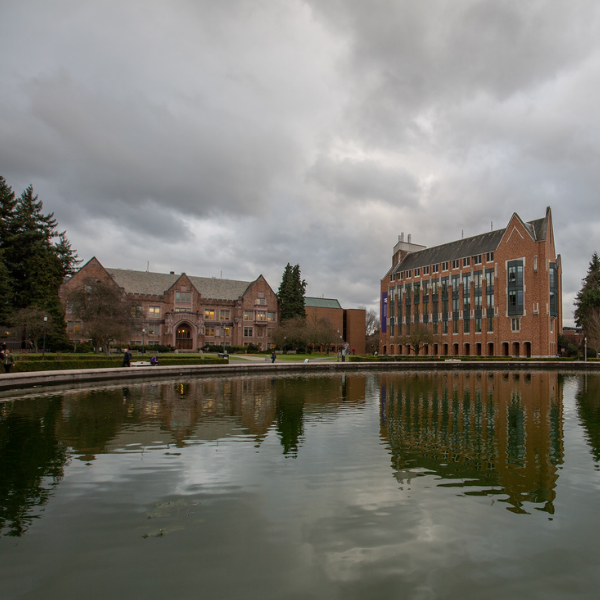Every day the future is expanding in our labs. From the development of advanced unoccupied aerial vehicles to new aerodynamic techniques and unconventional space propulsion concepts, the faculty and students of UW Aero & Astro are honing the cutting edge of tomorrow's technologies.
Undergraduate stats: Academic year 2024-25
270
Undergraduate enrollment
23%
Women
16%
Underrepresented minorities
81
BSAAE degrees awarded
Graduate stats: Academic year 2024-25
306
Graduate enrollment
16%
Women
17%
Underrepresented minorities
22
MSAA degrees awarded
29
MAE degrees awarded
8
Ph.D. degrees awarded
Under-represented Minority (URM) Status: This breakdown splits the students according to whether or not they are part of an under-represented minority. A student will be considered part of an underrepresented minority if that student reports belonging to one or more of the following ethnic/racial groups: Hispanic, Hawaiian/Pacific Islander, American Indian, African-American.
Recent student achievements
- Air Force Research Laboratory Space Scholar
- Aviation Week's "Twenty 20's"
- Brooke Owens Fellowship
- Clean Energy Institute Graduate Fellow
- Department of Defense SMART Scholar
- Forbes Magazine's "30 Under 30" Awardee
- Fulbright Scholar
- Josephine de Karman Fellow
- Lemelson-MIT Student Prize
- Mary Gates Research Scholarship
- NASA Space Technology Research Fellowship
- National Defense Science and Engineering Graduate Fellows
- National Science Foundation Graduate Research Fellows
- National Sciences and Engineering Research Council of Canada Fellows
- SAE Doctoral Engineering Fellowship
- UW Husky 100
Quick history
The University of Washington’s William E. Boeing Department of Aeronautics & Astronautics (A&A) has helped shape one of the most influential and dynamic aerospace regions over the past century.

1917
Boeing Wind Tunnel (now the Aerodynamics Laboratory) built in 1917 at the UW. In 1921, Frederick Kirsten build the first cycloidal propeller model and tested it in the Wind Tunnel.
1929
UW starts one of the first Aeronautical Engineering departments in the nation, one of seven originally established with the help of the Guggenheim Fund for the Advancement of Aeronautics.
1936
Kirsten Wind Tunnel built; formal testing begins in 1939 with the North American AT-6 "Texan."
1956
Professor Harold Martin co-authors the seminal paper introducing the Finite Element Method.
1961
"Astronautics" added to department name in 1961.
1966